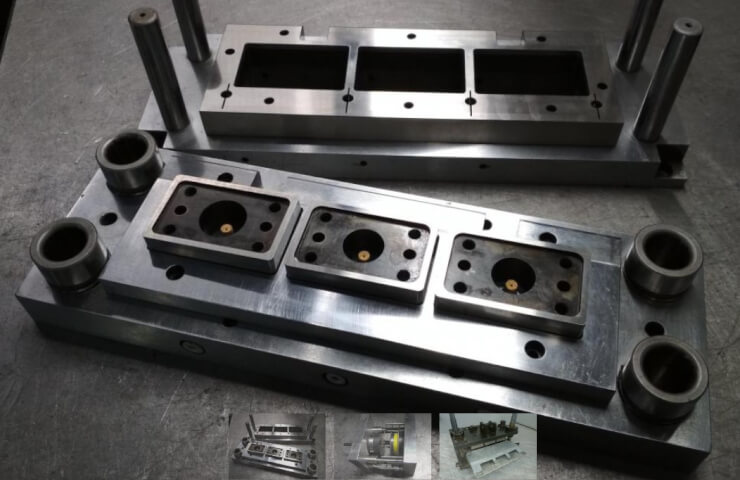The service life of stamping equipment depends on the metal, the load, and the qualifications of the workers who will use it. Production of press dies from durable materials does not guarantee long-term use. To avoid damage, premature wear, it is necessary to correctly install the equipment in the press, to know the signs of problems, the features of their elimination.
Defects in stamping tooling
Incorrect installation leads to problems with press dies in 70% of cases.
-
Table skew is indicated by blunting of the cutting edges, increased friction on one side.
-
The part is not completely cut through due to contamination entering the die. This leads to the development of cutting edges.
-
The gap between the shank and the mount causes burrs (excess metal on the parts).
-
The use of non-metal of inadequate quality for the manufacture of tooling leads to rapid wear of the cutting edges, incomplete cutting of parts.
Timely detection of signs of problems saves resources, prevents the release of defective products.
Methods of repairing stamping equipment
Wear prevention is the most effective way to repair.
To do this, the responsible employee must do the following:
-
install the snap-in correctly;
-
watch for defects;
-
test dies.
Problems with tooling are indicated by a 50-fold repetition of defective parts.
Repair is done in the following ways:
-
replacement of stops, clamps;
-
groove of the main elements;
-
surfacing with subsequent adjustment of elements according to paint;
-
replacing a punch (moving part) or a die (fixed element).
Replacement of auxiliary elements (clamps, stops), turning can be done on the spot, as they do not require the use of special equipment. Disassembly and troubleshooting is preliminarily performed. Replacement of a matrix or a punch is carried out in specialized workshops. This is an expensive process, so it's better to order a new rig.
The elimination of defects, the production of a duplicate is carried out on the basis of technical documentation (sketches, drawings). If necessary, adjustments are made. This is done with the consent of the customer.
After the repair work is completed, the molds are assembled, installed, and tested. Compliance with technical, technological standards, safety requirements will reduce the damage from equipment malfunctions.





